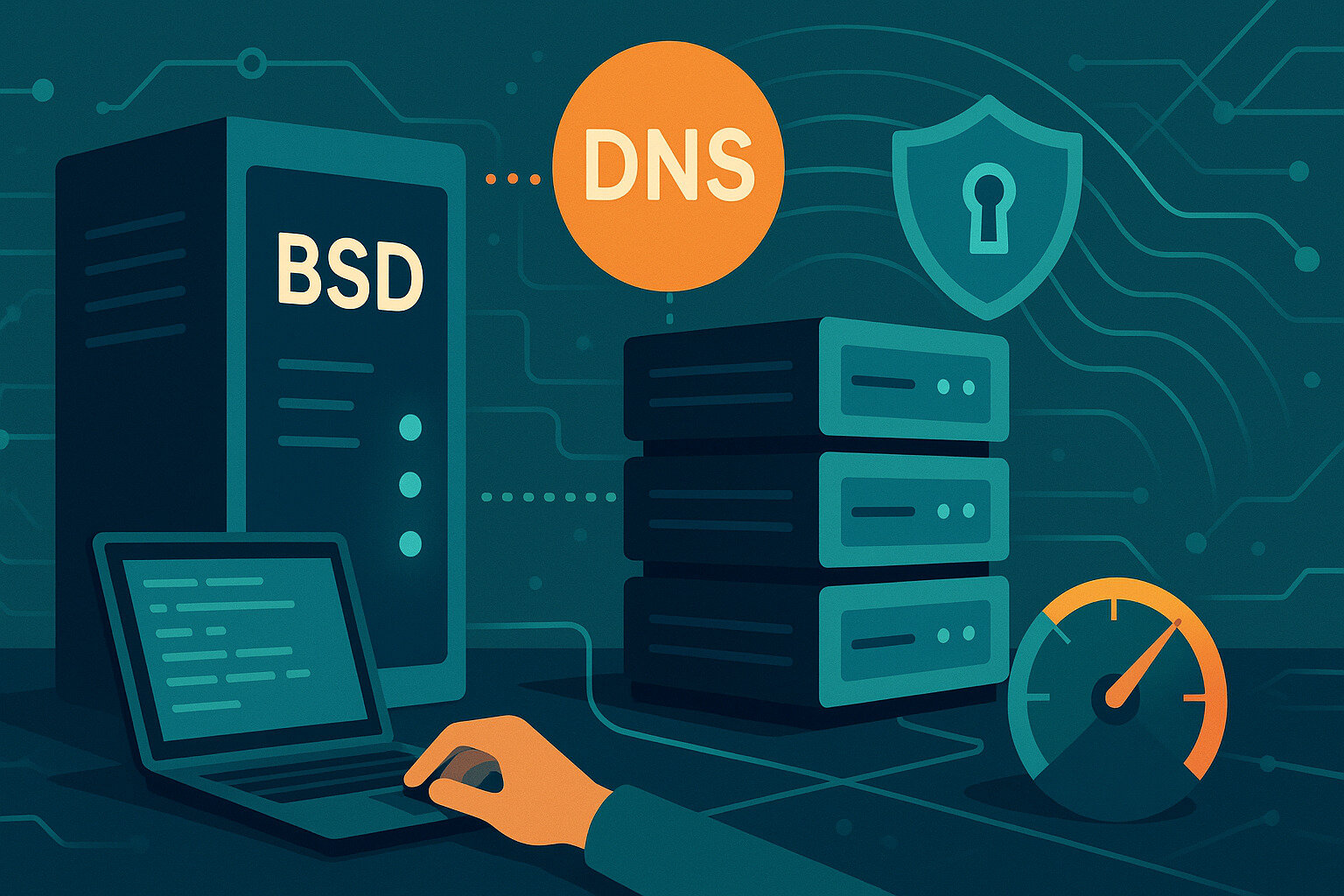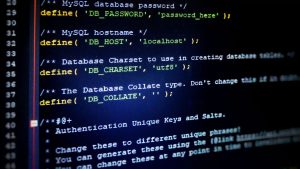Building a Faster and Safer Internet Experience on BSD
DNS settings don’t often get much attention. But for users who value speed and security on their BSD systems, configuring DNS servers in BSD for speed and security can make a noticeable difference. Whether it’s for home use, hosting, or small-scale development, a well-configured DNS setup helps load websites quicker and can block some online threats before they reach the browser.
On a typical setup, DNS servers are either automatically assigned by an ISP or left on default configurations. While this works for most casual users, it’s not always the best route for performance or safety. Manually configuring DNS can improve response times and reduce exposure to malicious actors that take advantage of unsecured queries.
A few minutes of attention to how the system handles DNS can lead to better results every time a domain is typed in. For BSD users who appreciate control and consistency, adjusting DNS settings is one of those behind-the-scenes improvements that bring long-term benefits.
Understanding How DNS Works in BSD Systems
Before making changes, it helps to understand how DNS fits into the BSD environment. Every time a user accesses a website, their system reaches out to a DNS server to convert the domain name into an IP address. If that DNS server is slow or unreliable, it slows everything else down too—which is why configuring DNS servers in BSD for speed and security is an essential step for improving overall system performance and reliability.
BSD systems, like FreeBSD, typically rely on the resolv.conf file located in the /etc/ directory to define which DNS servers to use. This file tells the system where to send DNS queries, and in what order. If it’s misconfigured or empty, delays or failures in browsing are likely. For enhanced performance and control, configuring a Local DNS Resolver can be a useful option, allowing the system to handle DNS requests directly without relying on external providers.
Although most systems will work with the ISP’s default DNS, BSD gives users the freedom to switch to public DNS providers or even set up local DNS caching. This is where manual configuration steps in, providing options for those who want more reliability and control.
Choosing the Right DNS Servers for Speed
Not all DNS servers are created equal. Some are built for speed, while others focus on privacy or filtering. Choosing the right one based on what matters most—whether that’s speed, anonymity, or content control—can impact daily use noticeably.
Google DNS, Cloudflare DNS, and Quad9 are among the fastest options for public use. They often respond more quickly than ISP-provided servers, especially if the ISP’s servers are located far from the user. For those who frequently visit international sites or run remote operations, speed can vary greatly based on DNS performance.
When selecting a DNS server, it’s worth running a few tests. Tools like drill, dig, or dnsperf can help identify which servers respond the quickest from a specific location. What works best for one region may not work as well in another, so some experimentation pays off.
Editing resolv.conf to Apply Your DNS Preferences
The /etc/resolv.conf file is where changes take place. Inside it, users can specify up to three DNS servers using the nameserver directive. The system reads this list from top to bottom, using the first server that replies.
Editing this file is simple using a terminal text editor. Add lines like nameserver 1.1.1.1 or nameserver 9.9.9.9, and then save. Once saved, the system begins using those DNS entries immediately, no restart required. It’s a small change with a noticeable effect.
Sometimes, however, other services like dhclient may overwrite this file upon reboot or reconnect. To make the changes stick, extra steps are needed such as adjusting DHCP client configurations or using resolvconf or local_unbound. Keeping control over resolv.conf is vital for consistent DNS behavior.
Using DNS Caching for Quicker Responses
One way to increase speed is to store DNS results locally for reuse. This means that instead of asking the same question multiple times, the system remembers past answers and skips the lookup process entirely for a period of time.
DNS caching can be handled by lightweight tools like dnsmasq or unbound. These act as local servers on the machine, keeping recent lookups on hand. This setup works well for developers or users who access the same domains repeatedly throughout the day.
A local cache not only improves performance but also reduces dependency on external services. It allows a BSD system to respond instantly to known queries, keeping things efficient and smooth, especially during peak usage or network interruptions.
Securing Queries with DNS over TLS and DNS over HTTPS
Traditional DNS traffic is unencrypted. This makes it easier for third parties to see which domains are being accessed. To improve privacy and security, newer protocols like DNS over TLS (DoT) and DNS over HTTPS (DoH) can be used.
BSD systems can support these encrypted options by using resolvers like stubby, unbound, or dnscrypt-proxy. These tools encrypt DNS traffic so that it can’t be read or tampered with in transit. It’s particularly useful for anyone using public networks or working in shared environments.
Setting up encrypted DNS involves some additional steps, like updating configuration files and installing trusted root certificates. But once done, the added protection makes DNS activity far less visible to unwanted observers.
Blocking Malicious Domains at the DNS Level
DNS can also be used as a first line of defense. Some DNS providers maintain blocklists that automatically prevent connections to phishing sites, malware domains, and trackers. Choosing one of these can stop certain threats before they load.
Providers like Quad9 and OpenDNS offer this kind of filtering for free. After switching to them in resolv.conf, users instantly gain protection without installing extra software. It’s a passive defense strategy that works in the background.
For more customized control, tools like Pi-hole can be deployed on local networks to create personal blocklists. This approach gives BSD users flexibility in deciding what kinds of content and domains are allowed, tailored to their own standards.
Managing DNS with DHCP to Avoid Overwrites
BSD systems using dynamic IP addressing might encounter issues with DNS settings getting replaced after a reboot. This happens when the DHCP client rewrites resolv.conf with values supplied by the network.
To keep manual settings in place, it’s necessary to edit /etc/dhclient.conf and add a rule like supersede domain-name-servers 1.1.1.1;. This tells the system to always use the specified DNS, even if the network offers a different one.
Controlling DNS through DHCP ensures that changes remain stable and consistent across reboots and new network connections. Without this step, custom configurations may vanish, leading to confusion and inconsistent performance.
Using Local Unbound as a Recursive Resolver
Unbound is a powerful tool that can run as a local, recursive DNS resolver on a BSD system. It handles requests directly, without needing to rely on external DNS providers. This means faster lookups for frequently visited domains and complete control over DNS behavior.
Installing and configuring Unbound involves creating a configuration file with trusted root hints and caching parameters. Once running, it can be set as the system’s primary nameserver by pointing resolv.conf to 127.0.0.1.
Because Unbound supports DNSSEC and TLS, it can also verify the authenticity of DNS responses and keep queries encrypted. It’s a solid choice for users who want maximum performance, privacy, and reliability in one package.
Testing and Troubleshooting Your DNS Configuration
After setting things up, it’s a good idea to test the new configuration. Commands like dig, host, and nslookup are available on most BSD systems and provide information about DNS response times, query paths, and server addresses.
If something isn’t working, check for typos in resolv.conf or configuration files. Make sure no conflicting services are running that override DNS behavior. Firewalls or router settings can also impact performance or cause queries to fail silently.
Regular testing ensures that DNS continues to work as expected. It’s especially useful after network changes, system upgrades, or when switching between Wi-Fi and wired connections. The smoother the DNS setup, the better the user experience across every online task.
Keeping DNS Fast and Safe with Regular Maintenance
DNS settings are often treated as set-and-forget, but occasional check-ups can help maintain speed and security. This includes verifying that caching services are still active, watching for updates to public DNS providers, and clearing out old configuration entries.
If security is a priority, changing to DNS servers with built-in threat filtering or running periodic scans helps prevent surprises. For performance, watching query response times over time can show whether it’s worth trying a different provider.
Taking a few minutes every few months to review DNS configurations can keep the system running at its best. Like oil in an engine, it’s easy to ignore until problems appear—but configuring DNS servers in BSD for speed and security through regular maintenance helps prevent issues before they arise and ensures continued performance and protection.










No Responses